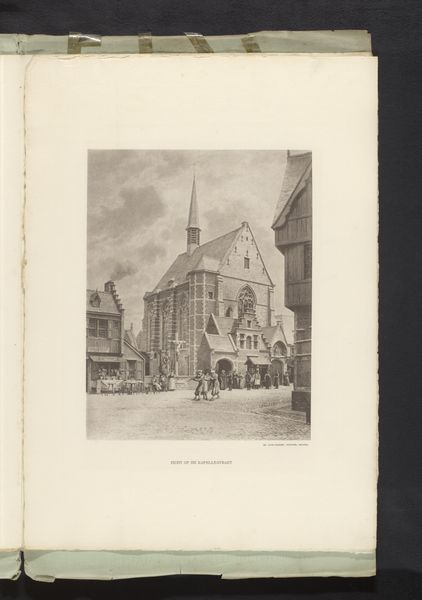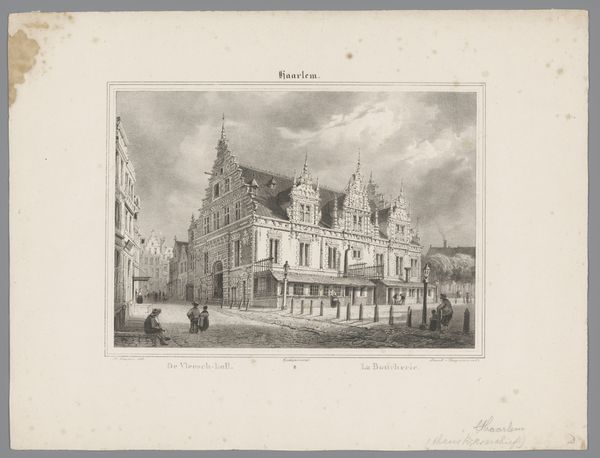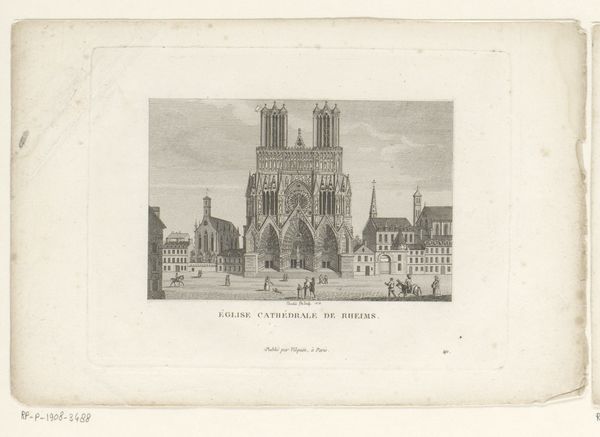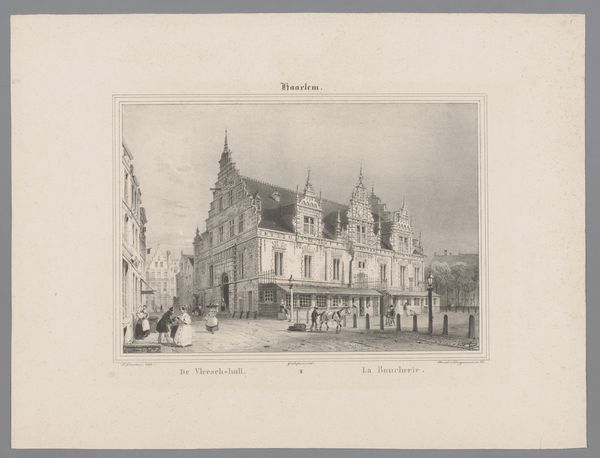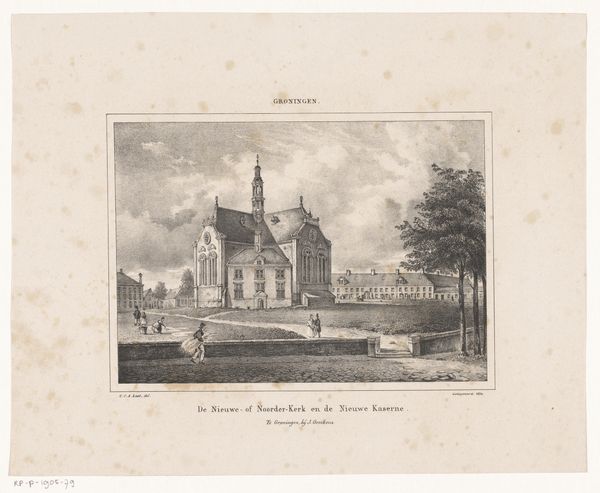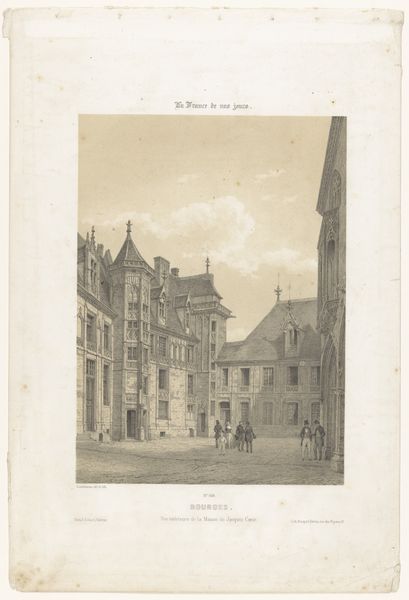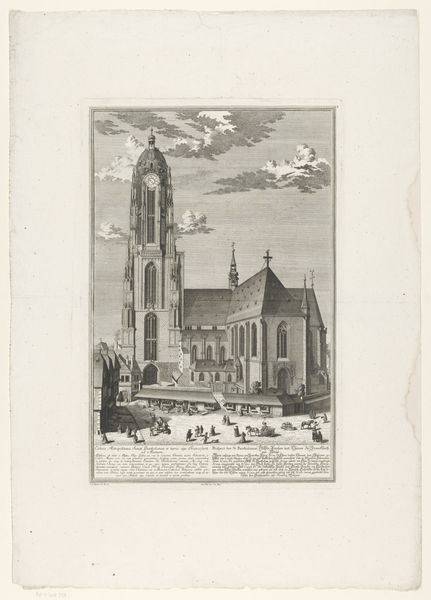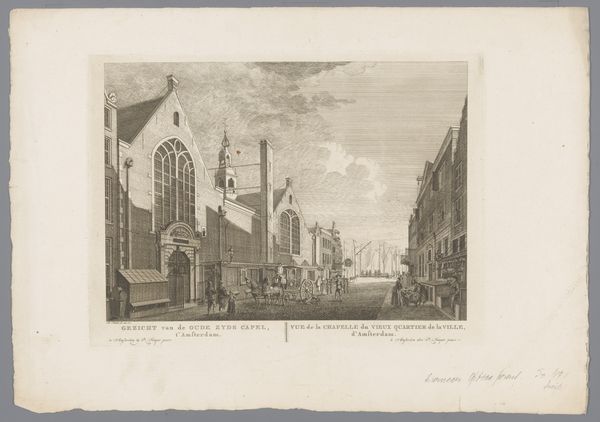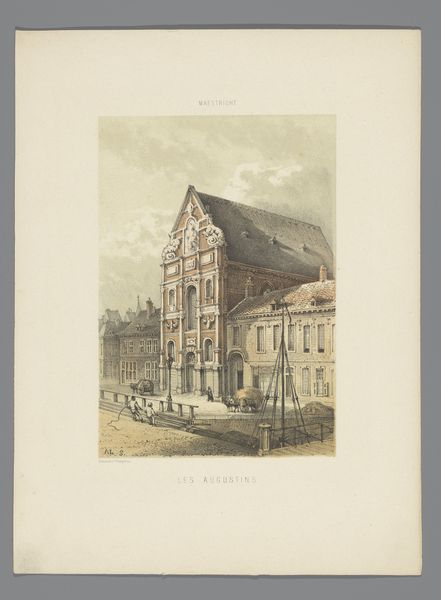
Dimensions: height 273 mm, width 368 mm
Copyright: Rijks Museum: Open Domain
Paulus Lauters made this print of the Sint-Bavokerk in Haarlem using lithography, a process involving drawing with a greasy crayon on a stone, then using ink to transfer the image to paper. Lithography was revolutionary because it allowed for relatively quick and inexpensive reproduction, democratizing image-making. Look closely at the print; the fine lines and tonal gradations capture the architectural details of the church and the surrounding urban landscape. The texture of the stone itself, and the skilled hand of the printer, are crucial to the print's aesthetic. This technique was embraced by artists and commercial printers alike, and it reflects the rise of mass media and visual culture in the 19th century. The labor-intensive process of creating each print still allowed for a wider distribution of images than ever before, and opened up new possibilities for artists to reach a broader audience. By understanding the materials and methods behind this print, we gain insight into the changing landscape of art production and consumption during Lauters' time.
Comments
No comments
Be the first to comment and join the conversation on the ultimate creative platform.

